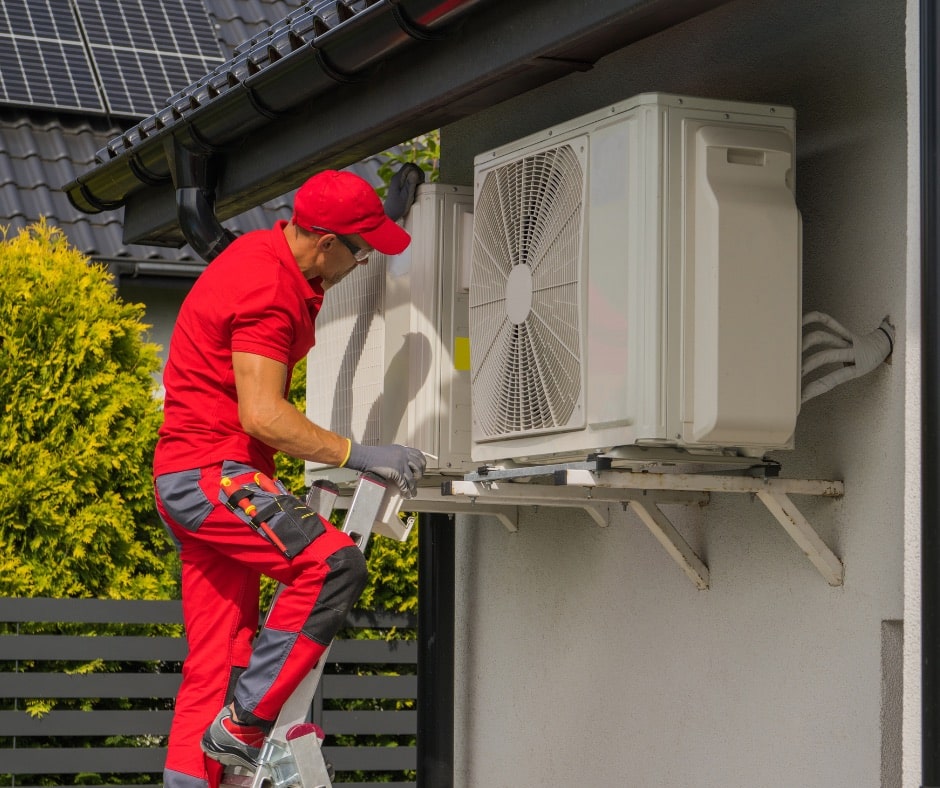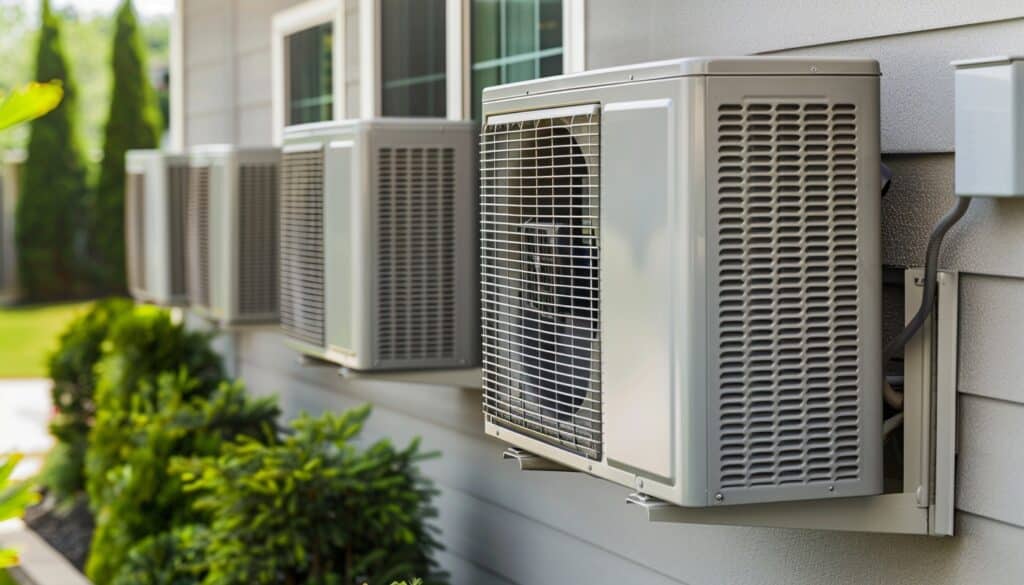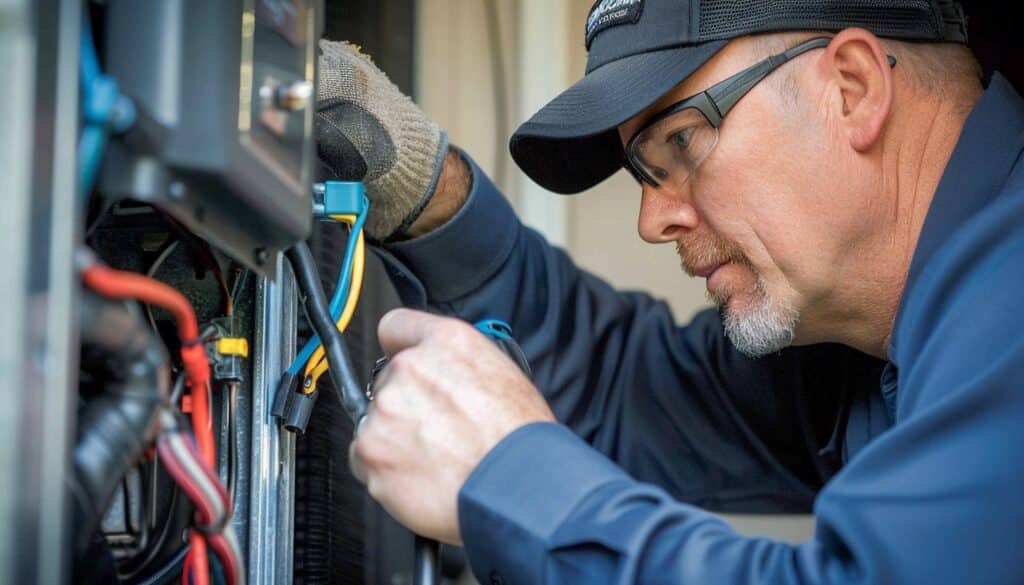4 Vital Tests in HVAC Systems Every Homeowner Needs
Table of Contents
- Introduction
- The Importance of Diagnostic Tests in HVAC Systems
- Key Types of Diagnostic Tests in HVAC Systems
- 3.1 Visual Inspections
- 3.2 Thermographic Scanning
- 3.3 Refrigerant Level Testing
- 3.4 Airflow Measurement Tests
- Benefits of Regular HVAC Diagnostic Tests
- FAQs
- Conclusion
1. Introduction
When it comes to maintaining a comfortable and energy-efficient home or commercial environment, the functionality of your HVAC (Heating, Ventilation, and Air Conditioning) system is paramount. An essential part of ensuring this functionality is conducting regular diagnostic tests in HVAC systems. These tests are critical for identifying potential issues before they escalate into costly repairs or replacements. In this blog, we will delve into the four key types of diagnostic tests in HVAC systems, highlighting their importance and how they contribute to the overall efficiency of your system.

2. The Importance of Diagnostic Tests in HVAC Systems
HVAC systems are complex machines that require regular monitoring to maintain their efficiency and longevity. Diagnostic tests in HVAC systems are like health check-ups for your equipment, ensuring all components are functioning correctly and efficiently. These tests not only prevent unexpected breakdowns but also enhance the performance of your system, leading to better indoor air quality, energy savings, and prolonged equipment lifespan.
3. Key Types of Diagnostic Tests in HVAC Systems
3.1 Visual Inspections
Overview:
Visual inspections are the most basic yet crucial diagnostic tests in HVAC systems. During these inspections, a technician examines the system’s components, such as the ducts, vents, filters, and overall cleanliness of the unit.
Key Points:
- Ductwork Examination: Ensures there are no leaks or obstructions that could impede airflow.
- Filter Check: A clean filter is essential for maintaining good indoor air quality and system efficiency.
- Component Condition: Identifies wear and tear on essential parts like belts, fans, and electrical connections.
Why It Matters:
Visual inspections help catch obvious issues that could lead to more significant problems if left unaddressed. For instance, clogged filters can force the system to work harder, leading to higher energy consumption and potential damage.
Application:
A technician visually inspects both indoor and outdoor units, looking for signs of wear, damage, or dirt accumulation. This simple step can significantly improve system performance and prevent minor issues from escalating.

3.2 Thermographic Scanning
Overview:
Thermographic scanning, also known as infrared scanning, is a more advanced diagnostic test used to detect temperature variations within the HVAC system. This test is particularly useful for identifying insulation issues, electrical problems, and areas where air might be escaping.
Key Points:
- Detects Hotspots: Identifies overheating components that could fail if not addressed.
- Insulation Issues: Highlights areas where insulation may be lacking, leading to energy loss.
- Electrical Problems: Reveals wiring issues or overloaded circuits that could cause system failure or even fires.
Why It Matters:
Thermographic scanning allows technicians to see issues that are not visible to the naked eye, providing a more in-depth analysis of the system’s condition. It’s a non-invasive way to ensure the system is running smoothly and efficiently.
Application:
Technicians use infrared cameras to scan the entire HVAC system. The resulting images show heat signatures that indicate the presence of potential issues, allowing for timely interventions.

3.3 Refrigerant Level Testing
Overview:
Refrigerant level testing is a diagnostic test specifically designed to measure the amount of refrigerant in the HVAC system. Refrigerant is crucial for the cooling function of the system, and an incorrect level can lead to inefficiency or damage.
Key Points:
- Ensures Proper Cooling: The correct refrigerant level is essential for effective cooling.
- Leak Detection: Low refrigerant levels can indicate a leak, which needs immediate attention.
- Efficiency Check: Proper refrigerant levels ensure the system is not overworking, which can reduce energy consumption.
Why It Matters:
Refrigerant is vital to the cooling cycle of an HVAC system. An improper level can lead to inefficient cooling, increased energy bills, and in severe cases, system breakdown.
Application:
During the test, a technician uses gauges to measure the refrigerant pressure in the system. If the levels are low, the system is inspected for leaks, which are then repaired before recharging the system with the correct amount of refrigerant.

3.4 Airflow Measurement Tests
Overview:
Airflow measurement tests are used to determine whether air is being distributed evenly and effectively throughout the HVAC system. This test is crucial for ensuring that all areas serviced by the system receive adequate heating or cooling.
Key Points:
- Balancing Airflow: Ensures that all rooms or zones receive the correct amount of air.
- Detects Blockages: Identifies any blockages or restrictions in the ductwork.
- Enhances Comfort: Balanced airflow contributes to consistent indoor temperatures and overall comfort.
Why It Matters:
Uneven airflow can lead to hot or cold spots in your home or business, making the environment uncomfortable. It can also cause the system to work harder, leading to increased wear and tear and higher energy bills.
Application:
Technicians use specialized tools like anemometers to measure the airflow at different points in the system. They may also inspect the ductwork for leaks or obstructions that could impede proper airflow.
4. Benefits of Regular HVAC Diagnostic Tests
Conducting regular diagnostic tests in HVAC systems offers numerous benefits:
- Prevents Major Repairs: Early detection of issues can prevent them from turning into costly repairs.
- Improves Energy Efficiency: Ensures that the system is running at peak efficiency, reducing energy consumption and costs.
- Enhances Comfort: Balanced airflow and proper refrigerant levels ensure consistent indoor temperatures.
- Prolongs System Life: Regular maintenance and timely repairs can extend the lifespan of your HVAC system.
5. FAQs
Q1: How often should I schedule diagnostic tests in HVAC systems?
It is recommended to schedule diagnostic tests at least twice a year, preferably before the heating and cooling seasons begin. This ensures that your system is in top condition for the peak usage periods.
Q2: Can I perform any of these tests myself?
While basic tasks like visual inspections can be done by homeowners, more advanced tests like thermographic scanning and refrigerant level testing should be performed by trained professionals to ensure accuracy and safety.
Q3: What are the signs that my HVAC system needs a diagnostic test?
Common signs include unusual noises, uneven heating or cooling, higher than usual energy bills, and poor indoor air quality. If you notice any of these, it’s time to call a professional for a diagnostic test.
Q4: How do these tests improve indoor air quality?
Tests like visual inspections and airflow measurements can identify issues like clogged filters or blocked ducts that affect air quality. Addressing these problems ensures cleaner, healthier air in your home or business.
Q5: What is the cost of HVAC diagnostic tests?
The cost can vary depending on the type of test and the complexity of your system. However, investing in regular diagnostic tests can save you money in the long run by preventing major repairs and improving energy efficiency.
6. Conclusion
Regular diagnostic tests in HVAC systems are essential for maintaining the efficiency, safety, and comfort of your home or business. By understanding and utilizing the key types of diagnostic tests—visual inspections, thermographic scanning, refrigerant level testing, and airflow measurement tests—you can ensure that your HVAC system operates at its best. These tests not only help in early detection of potential issues but also contribute to the overall longevity and performance of your system, ultimately saving you time, money, and energy.
Keep your HVAC system in optimal condition with regular diagnostic tests, and enjoy a comfortable, energy-efficient environment all year round. If you’re in the Covina, San Marino, Burbank, Pasadena, or surrounding areas, trust Wintri for all your HVAC needs. Contact us today for a consultation and to schedule your next diagnostic test.

